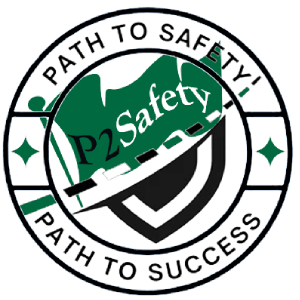SMS 25 Flashcards

1. value-based safety
Values-Based Safety® creates a partnership between employees and management that encourages all levels of employees to conduct safety observations and have meaningful conversations about safety.

2. The Voluntary Protection Programs (VPP)
The Voluntary Protection Programs (VPP) promote effective worksite-based safety and health. In the VPP, management, labor, and OSHA establish cooperative relationships at workplaces that have implemented a comprehensive safety and health management system.

3. A mission statement
A mission statement is defined as an action-based statement that declares the purpose of an organization and how they serve their customers. This sometimes includes a description of the company, what it does, and its objectives. A mission statement is a short summary of your company's purpose.

4. SMART
The SMART in SMART goals stands for Specific, Measurable, Achievable, Relevant, and Time-Bound. Defining these parameters as they pertain to your goal helps ensure that your objectives are attainable within a certain time frame

5. Internal audits
Internal audits focus on measuring current performance and finding areas for improvement.

6. External audits focus
External audits focus on proving the accuracy and veracity of financial statements. Auditor: External auditors are from a third party while internal auditors work on a company's behalf.

7. The Purpose of Management of Change
An MOC is used to ensure that the environmental, health, and safety risks are carefully evaluated and controlled prior to implementing significant changes. The MOC process gives employers a chance to identify potential new hazards that could result from these changes.

8. The Swiss cheese model
The Swiss cheese model of accident causation is a model used in risk analysis and risk management, including aviation safety, engineering, healthcare, emergency service organizations, and as the principle behind layered security, as used in computer security and defense in depth.

9. The BowTie model
The BowTie model moves the left to right 'Source to Consequence' elements to a top-to-bottom format in a table. Each part in the BowTie can then be linked to specific controls. This is best done by creating a separate list of controls because many controls relate to more than one escalation factor or barrier.

10. leading indicator vs lagging indicator
If a leading indicator informs business leaders of how to produce desired results, a lagging indicator measures current production and performance. While a leading indicator is dynamic but difficult to measure, a lagging indicator is easy to measure but hard to change.

11. The seven principles of adult learning
The seven principles of adult learning include self-direction, transformation, experience, mentorship, mental orientation, motivation, and readiness to learn. Adult learning theories can positively impact adult learning experiences both in the classroom and on the job.

12. What Is Learning Retention?
Learning retention is a person's ability to transfer new information into their long-term memory so that it is easy for them to recall and put that knowledge to use in the future. In simpler words, learning retention is all about making new knowledge stick for a long time.

13. The learning pyramid
The learning pyramid, also called the "cone of learning," is an education model theorizing that some teaching methods help students remember information more than others. To represent how much information students can recall, the model assigns each approach a percentage out of 100.

14. Components of an effective OHS management system
Management leadership and commitment. ... Identifying hazards and managing risk. ... Inspection of premises, equipment, workplaces & work practices. ... Investigation of incidents. ... Joint health and safety committee & representatives. ... Occupational health and safety programs.

15. classic motivation theory
Based on classic motivation theory, employee involvement suggests that employees will exert effort and work efficiently when they feel they are in control of their work, are given meaningful work, receive feedback on their performance, and are rewarded for the success of the business.

16. Building engagement
Building engagement means participating in its four essential components: enablement, energy, empowerment, and encouragement. If you want to create a workplace of truly engaged employees, each of these four elements must be alive and thriving in your organization.

17. What is employee commitment?
Employee commitment is an emotional attachment to and involvement with an organization. Employee commitment is a bond between the employee and the organization such that the employee wants to continue serving the organization and helping it achieve its objectives.

18. 4 steps to motivate your workforce
1. Provide clear expectations.
2. Provide regular recognition and praise.
3. Provide a clear understanding of the big picture.
4. Provide a caring company attitude.

19. The five steps of the TNA process
1. Defining strategic goals.
2. Outlining required skills and knowledge.
3. Evaluating current skills.
4. Locating performance gaps and causes.
5. Establishing training needs.

20. A training needs assessment
A training needs assessment indicates an employee's current skills and competency levels. This evaluation is then used to determine where each employee stands in terms of the required competency level needed for maximum performance and productivity in the present and future.

21. Unsafe Conditions vs Unsafe Acts
Unsafe Conditions can be defined as workplace environment risks to workers that may or may not have been identified, such as biological, chemical, electrical, environmental, mechanical, and physical conditions. Unsafe Acts can be defined as an employee ignoring the prescribed safety standards or company policies.

22. Unsafe act and unsafe condition difference
Machine rotating part without safety guard is example of unsafe condition, & operating of that machine is UNSAFE act performed by worker. Working at height is an unsafe condition, & not wearing PPEs while working at height is an unsafe act.

23. An unsafe behavior
An unsafe behavior is any act or behavior that deviates from a generally recognized safe way or specified method of doing a job and which increases the probabilities of an accident. Examples of unsafe behaviors in an industrial setting include: Lack of/improper use of PPE.

24. The 7 common workplace hazards
1. Safety hazards.
2. Biological hazards.
3. Physical hazards.
4. Ergonomic hazards.
5. Chemical hazards.
6. Work organization hazards.
Environmental hazards.

25. What are unsafe acts in aviation?
Unsafe acts also include two types of violation, defined in the report as “a deliberate breach of the rules by an operator who knows they are breaking air law” — routine, small-scale violations and “exceptional” violations that deviate significantly from the rules.




